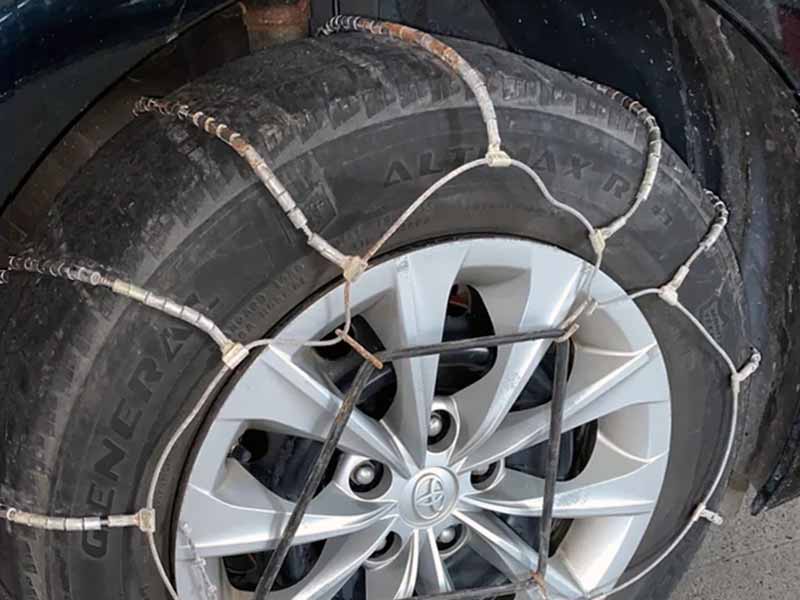As the snow starts falling and icy roads become inevitable, having a quality set of snow chains can mean the difference between getting safely to your destination or ending up in a ditch! But with any automotive equipment like chains, we all wonder – how long until they need to be replaced?
How Long Do Snow Chains Last?
The expected lifespan of snow chains depends on usage:
- Heavy duty drivers can expect 1-2 full winter seasons or 5,000-10,000 miles.
- Occasional light use may last 6-8 seasons with proper use and storage.
Inspect frequently and replace chains at the first sign of rust, damage, or excess stretching. Proper maintenance also prolongs lifespan.
In this article, we’ll cover when snow chains are too worn out and should be replaced, how their design and materials impact longevity, tips for maximizing lifespan through proper use and care, and what to do when your tire size changes.
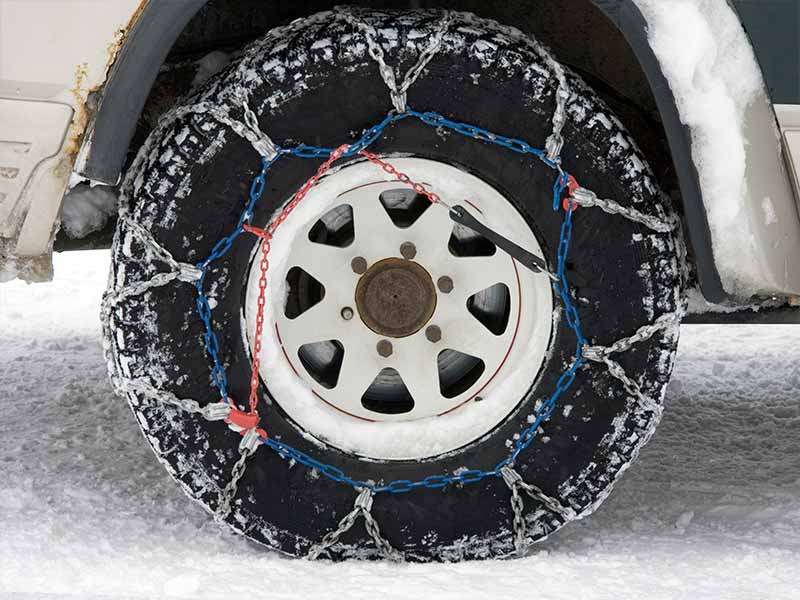
When to Replace Snow Chains
I always recommend inspecting snow chains thoroughly at the beginning of each winter season. It’s easy to just throw them in storage over the summer and forget about them, but taking a few minutes to check their condition can save you from being caught off guard by worn out chains when you need them most.
Signs that your chains are too worn and should be replaced include:
Rust or Corrosion
- Snow and road grime mixed with salt from winter roads takes a major toll over time
- Rust weakens the metal links and cross chains, creating weak points prone to breaking
- Pay special attention to inspecting points where links connect or overlap
- A few specks of surface rust may be ok, but deep/excessive rust means chains are too deteriorated
Stretched or Deformed Links
- The constant tension of chains as tires rotate gradually stretches links over time
- Stretched links don’t fit tires correctly, leading to uneven tightness
- Deformed links also make proper installation difficult
- Misshapen links can pop loose when driving, damaging chains further
- Improper sizing or installation leads to quicker stretching/deforming
Broken Cross Links or End Hooks
- Broken cross links or end hooks severely compromise integrity
- Entire chain is only as strong as its weakest link
- Damage may occur slowly over many uses or suddenly by road impact
- Carefully inspect entirety of chains prior to each use
Ripped or Frayed Cable Chains
- While more durable than traditional links, cable can fray over time
- Use on rough roads accelerates fraying damage
- Damage may be small initially but worsen quickly once started
- Replace cables at first sight of fraying excess fraying
In terms of mileage, most standard passenger tire chains should last 1-2 full winter seasons or between 5,000-10,000 miles before needing replacement. However, many factors impact lifespan, so use visual inspection and common sense along with these mileage estimates.
I check my own chains each fall and rarely need to replace them since North Carolina winters are mild and I don’t frequently drive in the harshest portions of the Appalachian mountains.
The last thing you want is for old, worn out chains to fail when driving in a blizzard! Stay safe by inspecting annually and replacing any time you spot excessive wear.
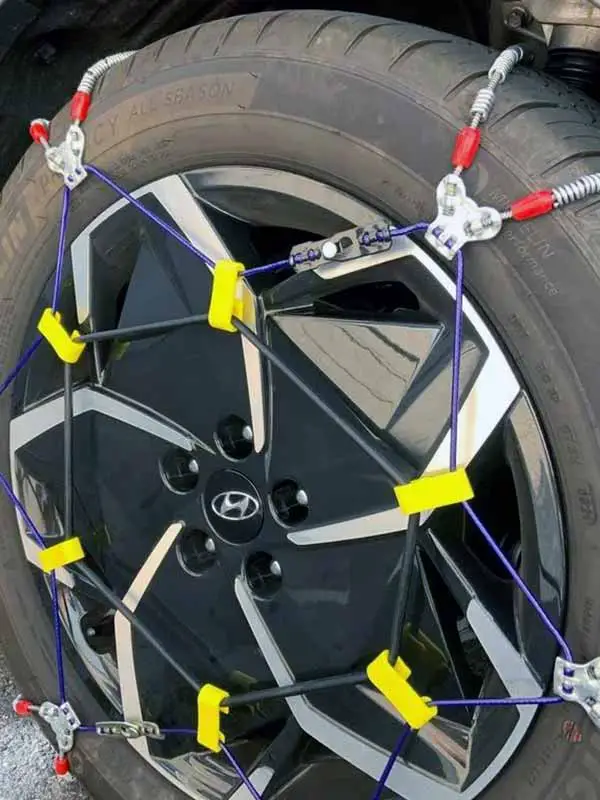
How Snow Chain Design Impacts Lifespan
The expected lifespan of snow chains depends heavily on the design and materials used in their construction. When choosing chains, it pays to understand the pros and cons of different types.
Difference Between Snow Chains and Cables
It’s easy to confuse snow chains and snow cables, but they have some key differences:
- Snow chains use interconnected metal links and cross chains to wrap around and grip your tires.
- Snow cables use thick steel cables typically with plastic side chains. The cables run across the width of the tire tread for traction.
Snow cables tend to be lighter and easier to install. However, traditional snow chains with metal links generally last longer and provide better grip in very snowy and icy conditions. My recommendation – choose metal link chains for longevity, especially if driving regularly in harsh winter weather with steep hills. Reserve cables for lighter occasional winter use.
Metal Link Chains
I’ve found traditional metal link style tire chains typically last longer than cable-style options. However, there are a few considerations with metal links:
- The thickness of the side chains and cross links is important – thicker gauge steel will resist damage and wear better over time
- Reinforced cross links add durability at stress points
- Ensure links are short enough to prevent over-tensioning as they wrap the tire
High quality steel with protective coatings to resist rust will maximize lifespan. I tend to get 3-4 full winter seasons from a sturdy set of metal link chains.
Cable-Style Chains
Cable-style chains are easier to install but sacrifice some longevity:
- The cables must be thick enough to withstand tension and friction
- Cross cables are high-stress areas prone to fraying over time
- Cheaper models may use low-grade steel cables with light plastic side chains
- I find these only last 1-2 seasons with regular use before fraying
High-end models reinforce the cables and connections to extend lifespans closer to traditional links. But their lighter weight means somewhat shorter lifespan in most cases.
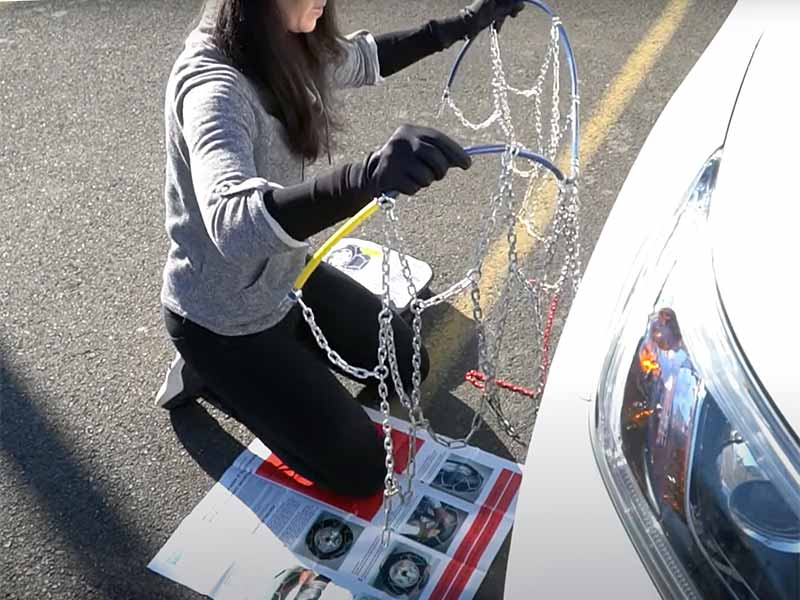
Proper Use and Care to Maximize Lifespan
Using and maintaining snow chains properly makes a big difference in how long they will last. Based on my experience, here are my top tips:
Install and Adjust Chains Correctly
- Carefully follow manufacturer guidelines on sizing and installation
- Ensure chains are tight enough to stay on, but not overly tight to stretch links
- Check adjustment after initial installation and at start of each trip
Taking time to get the fit right reduces strain and uneven wear on chains.
Remove Chains When Driving on Clear Roads
- Use chains only as long as necessary based on conditions
- Remove chains as soon as you reach cleared main roads
- Driving on dry pavement causes rapid wear through friction
Switch them on and off as needed during winter trips based on the weather and road conditions.
Clean and Dry Chains Thoroughly
- Hose off chains to remove road grime, salt and ice after use
- Make sure to dry them fully with a towel or let air dry
- A light lubricating oil can be applied after drying to prevent rust
Proper cleaning and storage is crucial to reduce corrosion and deterioration over the off-season.
Taking some basic steps to use and care for chains correctly will ensure you get the maximum lifespan from your investment.
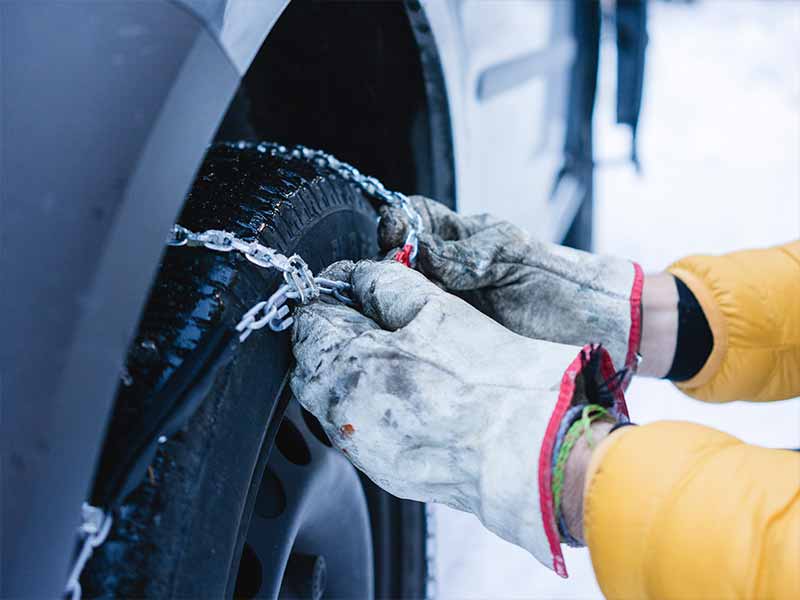
When to Replace Due to Tire Size Change
Snow chains are designed and sized to properly fit specific tire dimensions. So if you switch to a dramatically different tire size, you’ll likely need all new chains:
Know Your Tire Size
- Chains should be replaced whenever you go up or down more than one “series” in tire sizes
- For example, from a P215/60R16 to a P235/55R17 tire
Bring your new tire size specs when shopping for replacement chains.
Custom-Fit Chains
- Chains that conform precisely to your tires last longer
- Custom-fit chains also provide optimal snow/ice traction
- Consider going to a local specialty shop that can custom size chain length, links, etc. based on measuring your actual tires
While more costly, custom chains are worth it for safety and longevity.
Dangers of Ill-Fitting Chains
- Attempting to stretch chains too far or leaving them too loose can be extremely dangerous
- The chains are far more likely to break or detach at speed
- Loose chains also accelerate uneven wear from whipping against the tires
Don’t try to make old chains last through a tire size change – properly fitted chains are a must!
Resources
Below are some links you may find helpful when learning about tires:
- An introduction to tire chains for snow – The Drive
- Chains for tires 101: When should you use tire chains for cars? – NAPA
Final Thoughts
Good snow chains are a critical safety investment for winter driving. By understanding when to replace them and practicing proper care, you’ll keep your chains in peak condition for seasons to come. The small upfront cost is well worth it compared to getting stuck or crashing due to worn, ineffective chains.
Inspect and evaluate your chains annually before winter starts. Catching damage early increases the chances of getting at least a couple solid years of use. But at the first signs of rust, cracks, or stretching, it’s time to invest in new chains.
Good luck and happy motoring.
